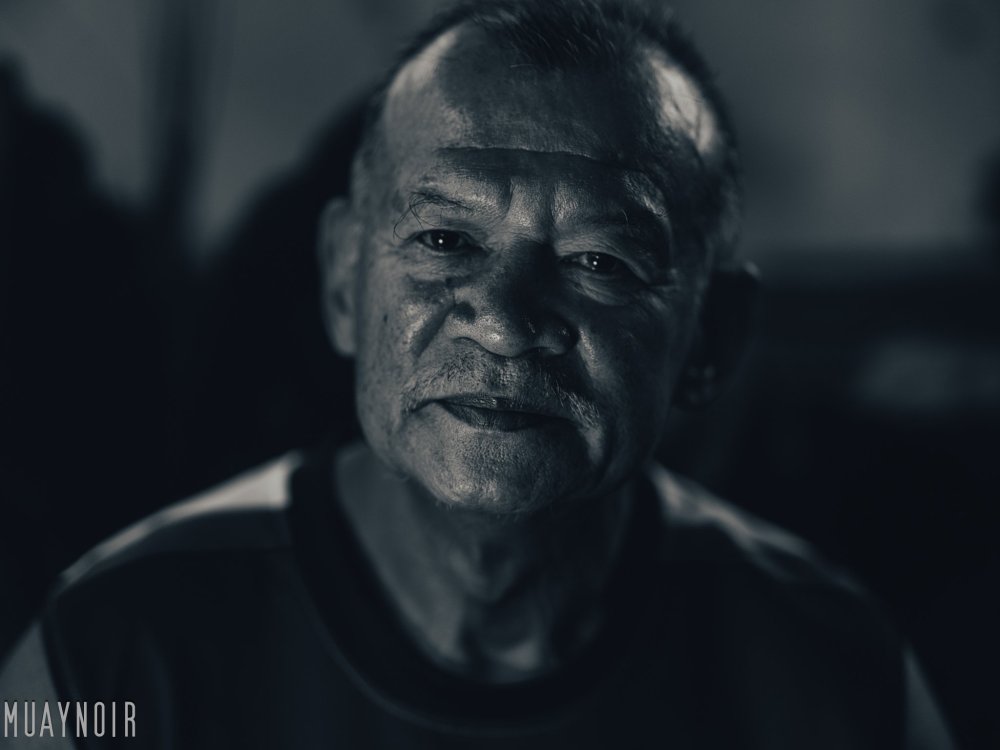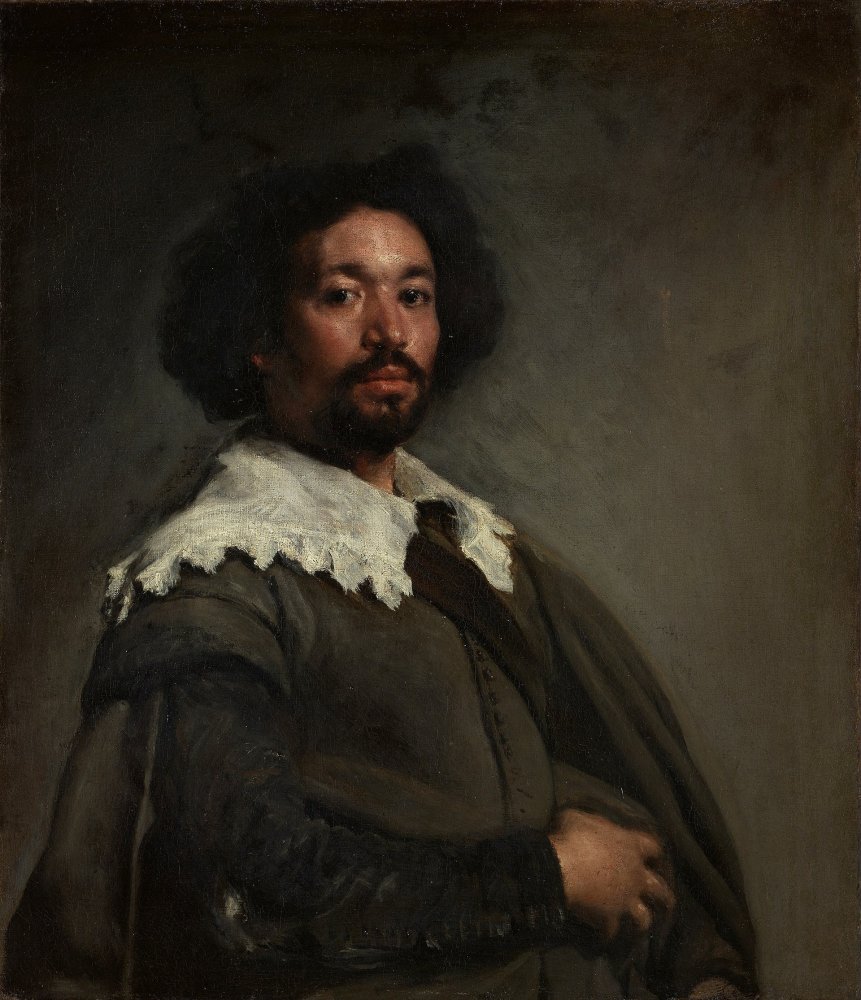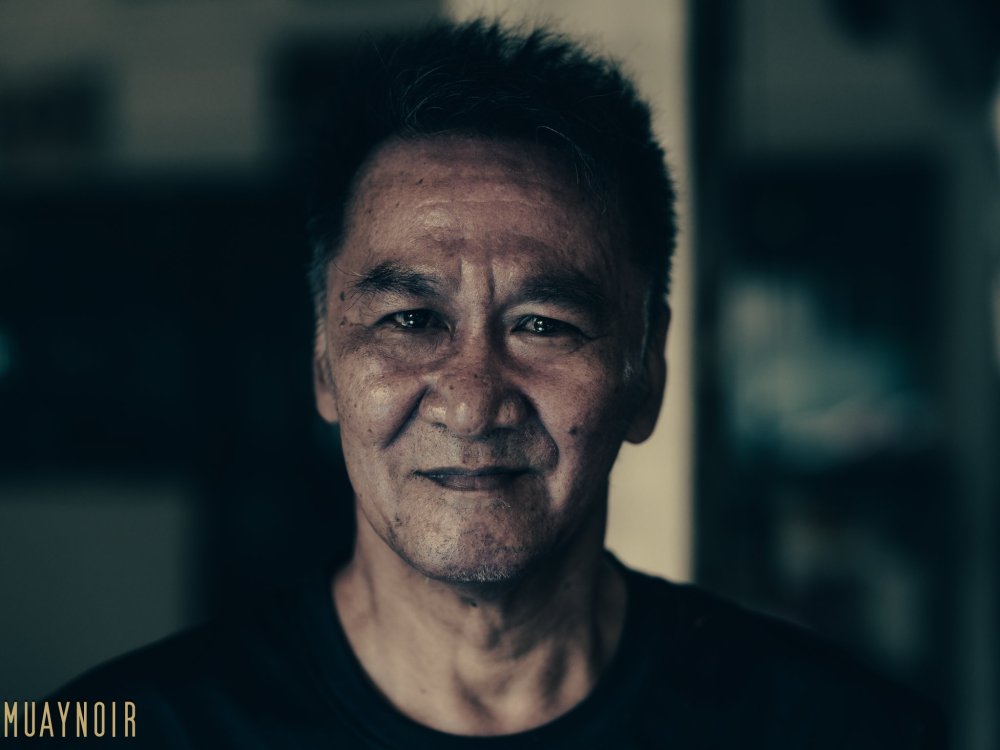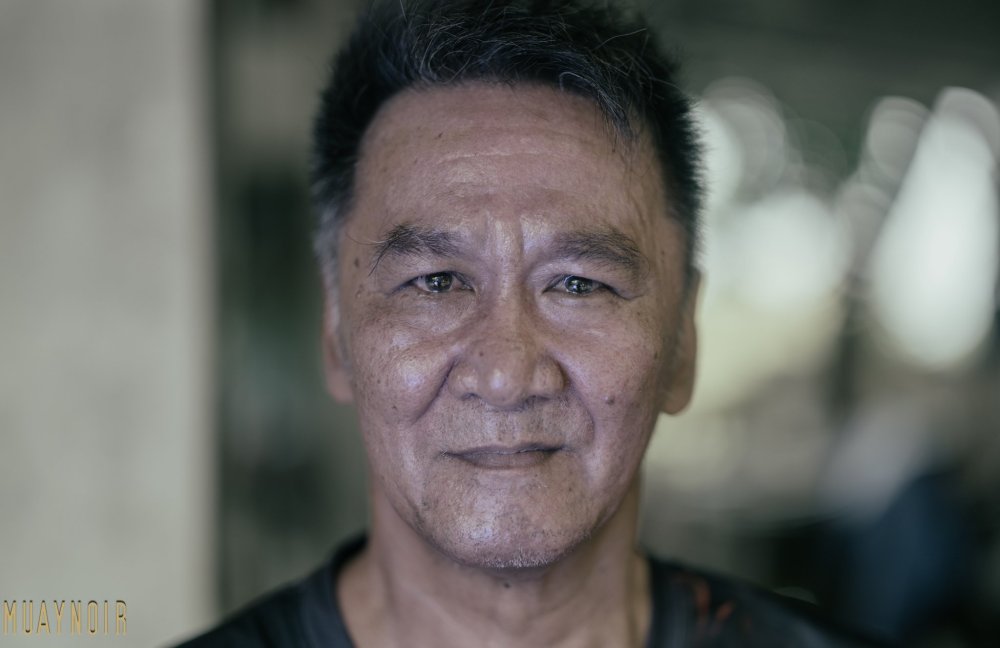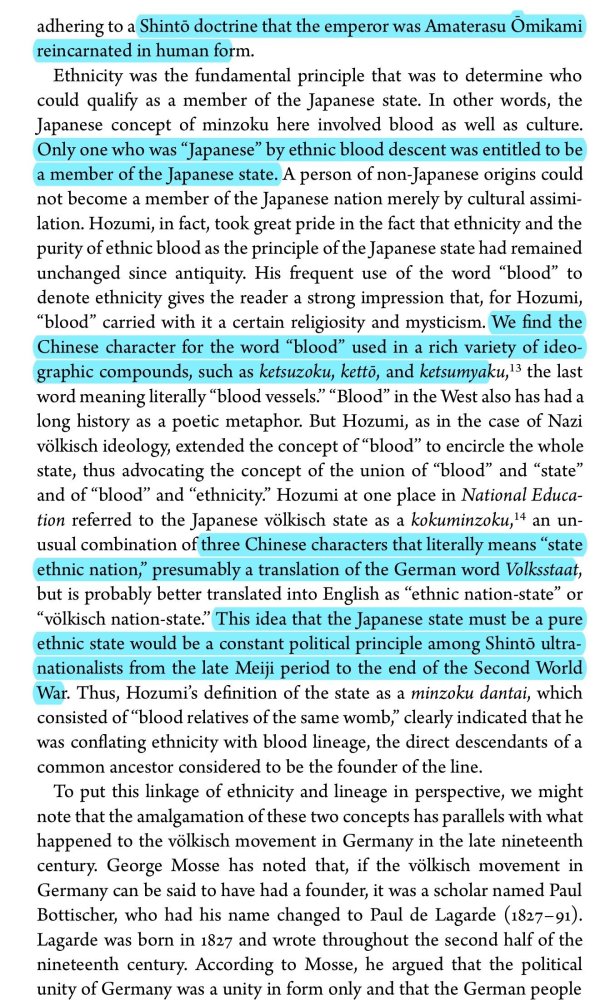Leaderboard
Popular Content
Showing content with the highest reputation on 11/11/2024 in all areas
-
As a follow up to my Deep Black photos of Takrowlek and Arjan Surat, his embrace of the style made me want to give him something meaningful for his small gym and home in Bangkok, so I sent prints of each, as well as of his brother Chatchanoi. Arjan Surat was his Kru during the Golden Age when he and his brother were fighters.1 point
-
The Arcane Season 2 Jackpot Arm and Probabilistic Fighting The following may be counterintuitional, because we often imagine fighters in terms of what they are doing, what they are actively controlling, and don't think about them largely being in nebulous, undetermined states, but the truth is that fights are largely on the edge of the chaotic and unpredictability, and while we can characterize most fighting approaches to bringing as much (favorable) predictability as possible, in the higher levels of fighting it is actually the way that fighters engage with unpredictability, and ride it like a wave. In any one engagement only 2 or 3 dimensions of fighting may be on a fighter's mind, their direct awareness, and how these dimensions arise or express themselves also will not be fully in the fighter's control. There is a degree of dice rolling. Part of this randomness is addressed through building deep principles within a style, so that unconsciously dimensions of fighting will loosely take care of themselves (solids of footwork, defensive wholeness, ways of moving), but on another register, the mental part of actually fighting the fight involves how you swim through and navigate the disorder of fighting itself, the variable ways things will present themselves, the limited number of things you can actually choose to exert as dimensions of fighting coming to and passing out of the forefront of your mind in a probabilistic space. Watching the beautifully animated fight scene in season 2, ep 2 where Jinx gives Sevika a new arm, a jackpot arm, which expresses in tech Jinx's own harnessing of randomness, a design of her own creation, makes me think about something I've learned from watching the fights of legends, and Sylvie studying and documenting them. The way that they deal with randomness. The above are screen caps of Sevika being told to pull the lever, and spin the arm's jackpot combination of powers and effects, most of the scene animated in a Spiderverse style can be seen below. It gives me to think about these qualities in Golden Age yodmuay, and their relationship to randomness and disorder. We know the phrase "lucky shot", which describes a somewhat unskilled, somewhat even unplanned, overly successful strike. This is a relationship to disorder that I'm not describing. And, with the advancing popularity of the trading of memorized combos over and over, waiting for one to land is also not what I'm discussing. The jackpot arm in Arcane combines particular effects in changing relationships. In the same way the elevated fighter is fighting with a changing combination of effects, over which she or he does not have full control. Techniques of manipulating space and timing, physical techniques of well thrown strikes, tempo controls, spacing. These are all in a yodmuay combining and recombining as the fight goes on. If you watch closely, yodmuay like Karuhat or Samart (especially in fights they lose, where it becomes more apparent) are constantly finding combinations of principles & execution that aren't lining up perfectly, and so as fighters are constantly only partially effective (Samart vs Wangchannoi is a good one for this, as is his fight vs Dieselnoi...you can see the recombination trying to find a solution in real time). The play with disorder and randomness is not only dealing with the fact that you are not going to be executing everything ideally. Timing, tempo (music), weapon choice, technical execution, defense, positioning (axes), distance (proximity), intensity (power), narrative, are all spinning, and at any particular engagement will line up in an unexpected way (like the jackpot arm). But you keep fighting within your style, applying its principles, and hiding any ill-affects (this is a very important yodmuay skill in Thailand's Muay Thai as well), over time as a good fighter effectiveness will prevail. You don't actually know how or why. It's like the arm, you keep spinning the slots. You aren't comboing over and over, waiting for your opponent to slip and become exposed to a rudimentary shape, its more complex than that. You are applying principles of control, in combination, along with well formed strikes, under the conditions that you cannot fully control how they combine, or how your opponent will be dealing with them. And then, in a round, or in a fight, you may suddenly break through. And when you do it looks like you have been in control most or much of the time. You haven't, but this is the illusion of the yodmuay. And its part of the narrative dimension of Thailand's Muay Thai. A lot of combo Muay Thai is a much more limited game. Timing is rudimentary, there is a lot of biting down, choosing when to "Go!". Distance is usually just in or out of the pocket (commonly defending oneself with space). Strike selection isn't as variable, as alive and perceptual, as strikes are grouped in pre-set bunches. In wider selection fighting a fighter is constantly making decisions along a multitude of aspects. In a single attack perhaps only three (like the arm) come to the fore, and the slots spin. A strike may be well formed, moderately timed, but the distance is wrong. You may have chosen the right strike, but you weren't positioned ideally, and its intensity was down. You may be throwing with power, but in the tempo you're at it isn't effective, even though it was well-formed (executed well). Your positioning may be great, and your technique is on-point, but it was the wrong strike. And then, at a certain point 3 factors come together, and they have great effect. One is using the probablistic nature of fighting, and thinking along these proposed 7 axes or so, rolling through features of an attack, only some of which you can control. The animation brings out this idea some, in part because Jinx is forcing Sevika to fight in Jinx's style, through her tech. Chaotically, to her music. There is something to this in terms of Thai styles and even weapon choices. Thai Techniques have families of variables that surround them, if you use them properly, within their music. You can't just cut out a technique like a body part from a corpse, and Frankenstein it...I mean you can, but you won't be capturing the full family of its effectiveness. When you come to Thai krus in Thailand in a certain regard you are adopting some of their tech, their style. Things they are teaching you involve a collection of elements that allow you to surf the unpredictability of the fight space. They are saying: Be a little like me (like in Let Me In). This is how to get the most out of great fighters and krus you train with in Thailand, learn to be probabilistically a little like them. You can see an edited video of the Arcane fight scene here, unfortunately Twitter cuts a minute out of the scene, so you'll have to watch the show to get the fuller meaning of the arm delivery and the discovery of how it works, etc: See the Scene here1 point
-
Entertainment Impacting the Stadium Style Watching a great young femeu timing kicker being turned into a Muay Maat slugger. Boxing is built from the center out, and in the footwork of angles. It's about the control of space. Not from combos on the pads. Entertainment Muay Thai is impacting even stadium Muay Thai, in the way that Thais even think about what punches are, and what they mean.1 point
-
Thai Drag For a long time Sylvie and I have just privately referred to some Western fighters in Thailand as doing "Thai Drag", which are these hyper stylized relaxations or over-exaggerated stylistics that indicate for them "Thai Style" when fighting in Thailand. This is difficult, in the sense that these fighters really do value and respect Thai style, and the values that drive that style and make it effective....and they are on the opposite end of the spectrum of people who come to wail it out in aggro-styles of Western combo fighting...though, some Thai Drag is kind of combo heavy, as these fighters often are "all about technique" and are very focused on precise exemplifications of "proper" technique, something they then then practice and drill in (non-Thai-style) combinations. Not relaxed at all: read my Precision – A Basic Motivation Mistake in Some Western Training Seeing another Thai Drag example just now, it calls to mind the difficulties of Westerners (from another culture) have in respectfully and accurately taking on the fighting style/s of Thailand...but there is a dimension of this which is kind of Drag Queenish (a supporter of trans- and drag- sexualities, so not saying this in a demeaning way) Below Dekkers in an interesting short convo talked about Western fighters at the time trying to fight like a Thai. "You're not a Thai, so don't fight like them, they are much better than you." he says: I don't think Dekkers is talking about Thai Drag, at this point, which involves a sort of emotive, and physical signaturism, but he is bringing up the point of trying to adopt a foreign style. I'm not really a fan of what Dekkers brought to the sport, in terms of how much he probably spearheaded its eventual distortion into today's Entertainment Muay Thai, but for those seeking the "true" heart of Muay Thai, in both its ethos and its effectiveness, this question of Drag is an interesting one. I think also of Skarbowsky's style, which is not pretty at all, but is quite relaxed and slowly pressuring. He lacks almost all visual signatures of "relaxation" as a stylistics, he isn't imitating relaxation...but he is very relaxed. He also isn't really bringing a Westernized Kickboxing to the ring either. He seems to have found his own, personal stylistic path within the deeper ethos of the art. He trained at the famed Jocky Gym, one of the most femeu gyms in Thai history, with fighters like Somrak in the fold at the time, but he isn't imitating a "femeu" style. I'm not providing Skarbowsky as an ideal type or style, but he does create a contrast with Dekker's answer to Thailand's Muay Thai, without passing into drag. Andy Thomson, legendary farang trainer of Lanna in Chiang Mai who trained many, many farang over the years, used to say that everyone has their own Muay Thai, there are thousands of Muay Thai. This isn't a criticism of Western fighters who fight in what might be seen as a kind of Thai Drag, every fighter is sincere in developing their style, but this is rather to share our own thoughts about Western ethos and Thai sensibilities as expressed in style; we realize "technique" loving styles or imitations often are affectively posted at the opposite end of the very aggro- handed, volume combo-fighting that Westerners can also bring the Thailand (an end of the spectrum we also recoil from), but also see that the "answer" to learning Thai style and effectiveness, in that there may be one, is found somewhere between the two extremes. There is a sense in which the ultimate principle in Thailand's Muay Thai may be tammachat, naturalness, which is kind of unforced aspect of movement. How you walk down the street is tammachat for you. Westerners can be caught very much in the beautiful of Thai striking, and credit much of that beauty to the physical lines it creates, almost bio-mechanically, but the true inner secret of that beauty is in their tammachat quality. In some sense if you approximate Thai techniques or stylistics without tammachat, you are missing the whole thing. You are doing "drag" in a way. This may mean that the tammachat version of Thailand's Muay Thai, for non-Thais not raised in the culture, or begun from a young age in the kaimuay, looks and is different than it would be for Thais who have been. There is a tammachat version, but its won't be indistinguishable. That's one reason why I find the Skarbowsky version kind of interesting.1 point
-
Edit in: We asked Arjan Surat about this and he says what the article below describes never happened. This would suggest that this article was a public pressure article by SongChai. Either Samart chose not to go, or Sityodtong stopped it, or both. Kept the discussion of it though, instead of deleting because its still an interesting event in the politics of Samart's comeback to Muay Thai. Interesting detail found by Sylvie today. SongChai says that he's sending Samart over to Arjan Surat to train him up, talking about a warm up fight in November, and then a Lumpinee fight on the King's Birthday in December. from Muay Siam, October, 1987 (fights that aren't recorded as happening). In three months Samart would make his comeback to Muay Thai, fighting Panomtuanlek. machine translate the 2nd page: Smart lost his WBC World Boxing Title to Jeff Fenech in May of 1987, and here he's seen as undergoing thorough health evaluation, apparently to begin serious training. Samart is famous for not training hard at this point in his career, so its notable that he's being sent to Arjan Surat, with a house being rented nearby. Arjan Surat was renown as the boxing trainer of World Champion Payao Poontarat, but even more so for being one of the toughest trainers in Thailand. They seem to be basically moving Samart out of the Sityodtong gym, at least for a stretch, to keep his mind of training and toughen him up. Also, the emphasis on the full medical examination, could this mean that the story that the deep weight cut for the Fenech fight (which was claimed to have weakened Samart) created the impression of possible damage? Thais do believe that strong weight cuts (with Samart's admission of the use of diuretics because he was having such a hard time with it) can permanently affect your health, Dieselnoi believes this of his cut vs Samart. The medical evaluation could be in answer to those concerns. If the machine translate is right, SongChai is talking about Samart becoming World Champion again (which could be translated as "champion of a 2nd era), establishing a budget and lining up two fights (he would end up becoming the 1988 FOTY he never fought for the Lumpinee title in the coming year), I'm not sure what that phrasing means, because he would end up re-starting his Muay Thai career in January. It also seems quite stark that Thailand's most famous promoter, SongChai, seems to be taking Thailand's most famous fighter, Samart, out of one of its most famous gyms, Sityodtong, for this comeback. This doesn't seem like a politically neutral act, unless Derjat and and Sityodtong had a working relationship of sharing training, like many non-Bangkok gyms do with Bangkok gyms. (Wangchannoi, I believe told us that when he was younger he used to spar with Samart at Muangsurin gym, if I recall. Which would mean that in Samart's comeback he fought at least 3 fights vs former sparring partners.) This political dimension makes me wonder if Samart even ended up going to Dejrat gym, and if this article was a public pressure article. The two announced fights in it were never recorded as happening. The well-known Panomtuanlek fight: My portrait of Arjan Surat just last week:1 point
-
*as a mod I've edited your title to be more informative to readers as to what it's about, its always good to present the topic substance in the title Both gyms are popular with students looking for "technique" and correction. Unless you find someone who has recently been to both (in the last year) and has your overall needs, it will be very hard to be able to gauge was it better for you. We've been to both, but a while ago. Sitjaopho was kind of remarkable in that it does provide a kind of authentic, but still technical environment (partly because all the farang there are themselves very into technique, so it creates a culture) but does this all in a very crowded gym. I don't know how they do it, I've never seen it elsewhere in Thailand. Crowded, but high level, creative and technical. Manop's we haven't been to in a while, but we found it a much smaller gym, so you might (???) get a more one-on-one, or looser feel for training, which might be good for you. But I'm just going off of vibes from a few years ago, and what I saw. If you are only training for a month, Sitjaopho might be best in that there is an entire culture of training there, including the long time students, and it will be easier to slip into a "way of life", because everyone's on that page? It takes about a week or 10 days to even acclimate yourself if you've never trained in Thailand before. But, we haven't really seen Manop's gym in a while. Generally, its very hard to take the advice of people online. They just are different kinds of people, see and experience different things, and gyms change very quickly in Thailand. Even 3 months can change a gym if a trainer leaves, or a group of students come or go.1 point
-
The Influence of Diego Velázquez' Portrait of Juan de Pareja (1650) I hadn't thought about it while writing this series until now, but I've been surely influenced by Velasquez's incredible painting. In the past I've called it my favorite painting, and I've visited in person more than once, staring at it. Not only does it hold that dark, luminous light, and a red-green fire color palette, the power of the eyes really elevates its accomplishment. I realize now that the painting, from decades ago, has shaped this current experimentation with portraiture, and you can see it in the color edit I did of another frame of Dieselnoi in this shoot, looking to publicly present color for Thai social reasons outlined above. The parallels are unconscious for me, and its been a while since I've thought about this painting, but it always is speaking to me. Side by side you can see the very strong influence. It's kind of remarkable when put together. It isn't just the soulful treatment of the eyes, but also in this case that green to red, the skin tones, and the specular highlights on the face, which also are seen as emphasized in the Deep Black style.1 point
-
1 point
-
Japanese Fascism and Kickboxing Reading up on the history of Japan's ethno-Shinto Fascism, to get a better sense of where Japanese Kickboxing grew out of, and what it represented in the Yakuza-ultranationalism that produced it. This should also give some insight into Thailand's Muay Thai and ethno-centrism it might reflect. It is not uncommon even today for Thais to speak of how Muay Thai is in their blood. Recently a kru explained to us his belief that Thai fighters were like fighting chickens, bred in a sense to fight (explaing why farang and Japanese aren't very good). We couldn't very well explain that this has to do with how much embodies Thai culture (and not genetics). This concept of blood and nation runs through Thai mythos, and Thailand itself had a history of Fascism, to which Muay Thai was not immune. The above from the following book on Japanese ultranationalism. Japan's Holy War_ The Ideology of Radical Shinto -- Walter Skya.pdf1 point
Footer title
This content can be configured within your theme settings in your ACP. You can add any HTML including images, paragraphs and lists.
Footer title
This content can be configured within your theme settings in your ACP. You can add any HTML including images, paragraphs and lists.
Footer title
This content can be configured within your theme settings in your ACP. You can add any HTML including images, paragraphs and lists.
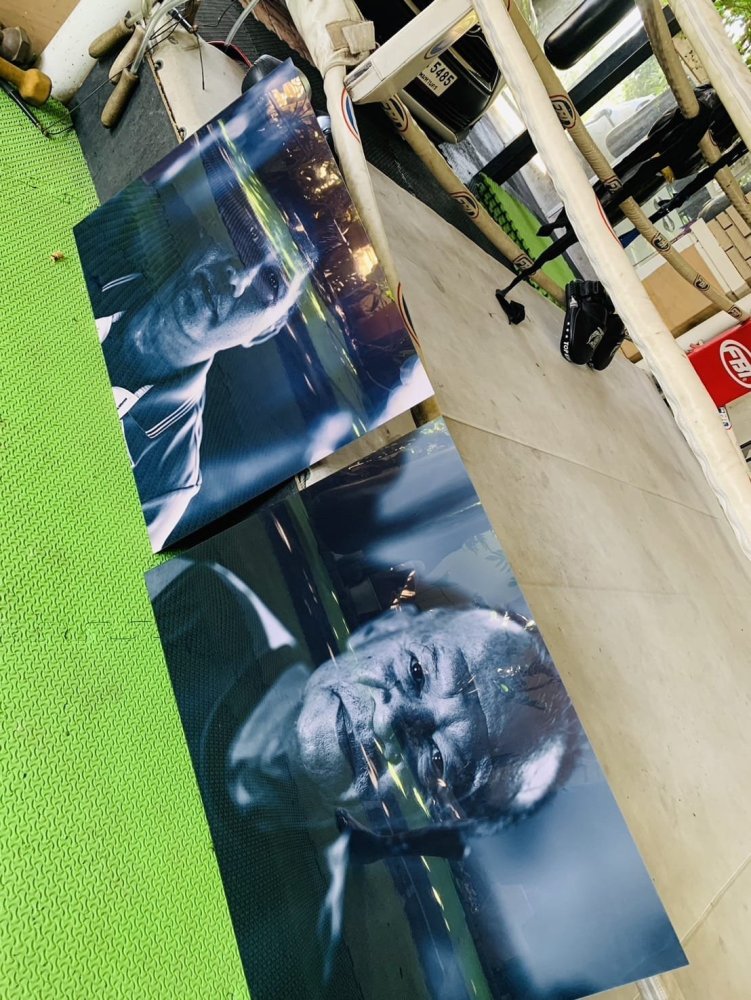
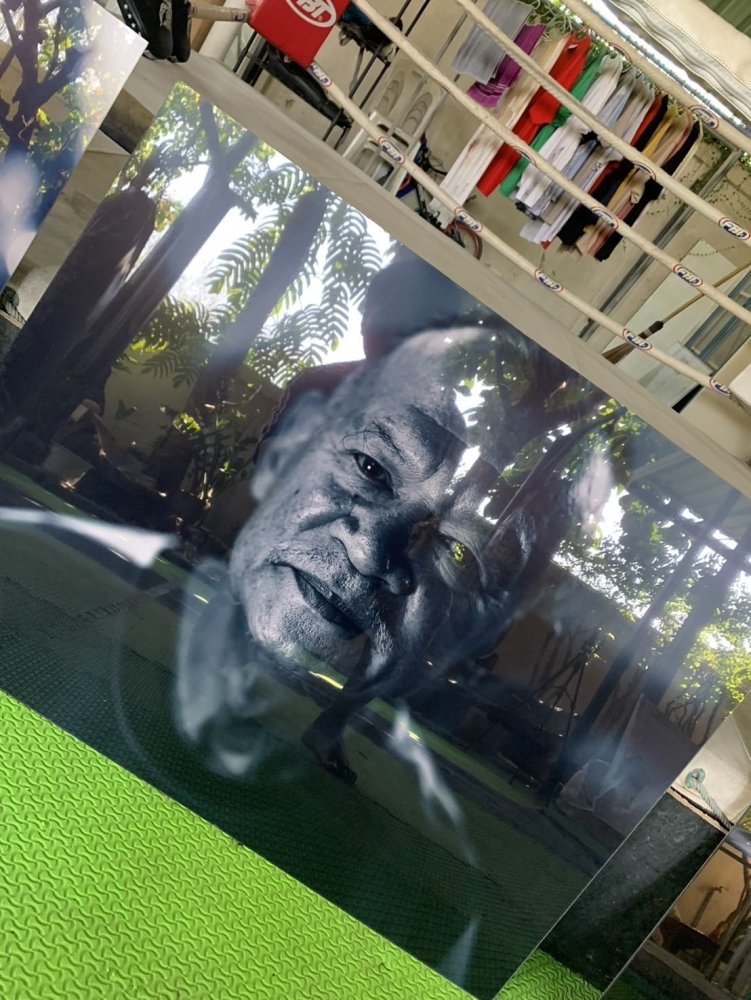
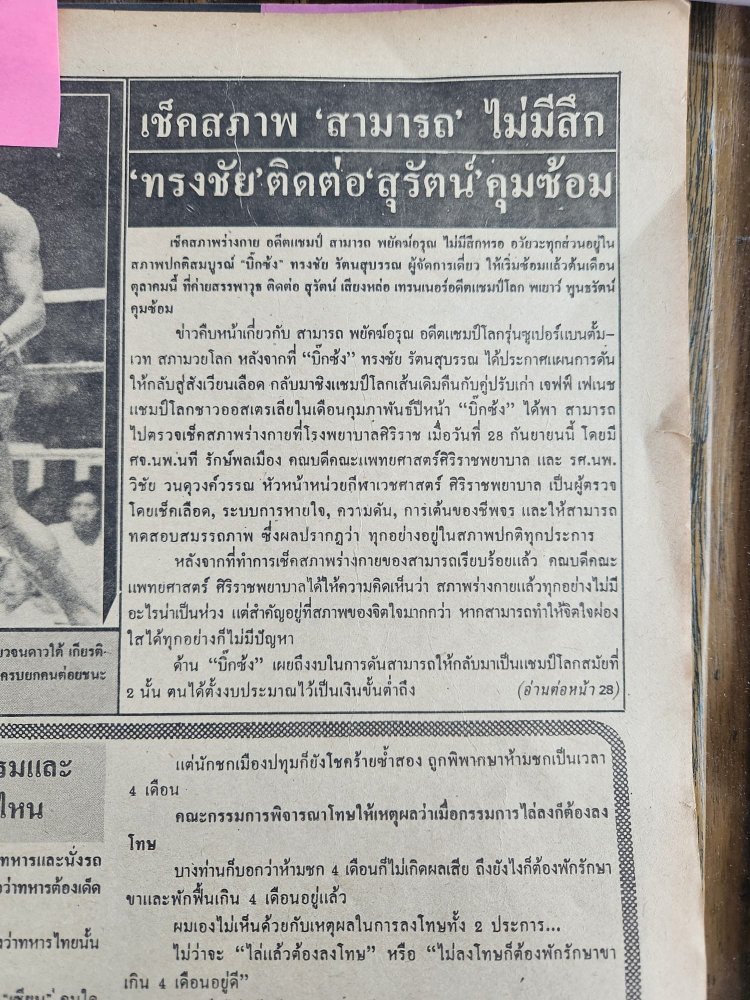
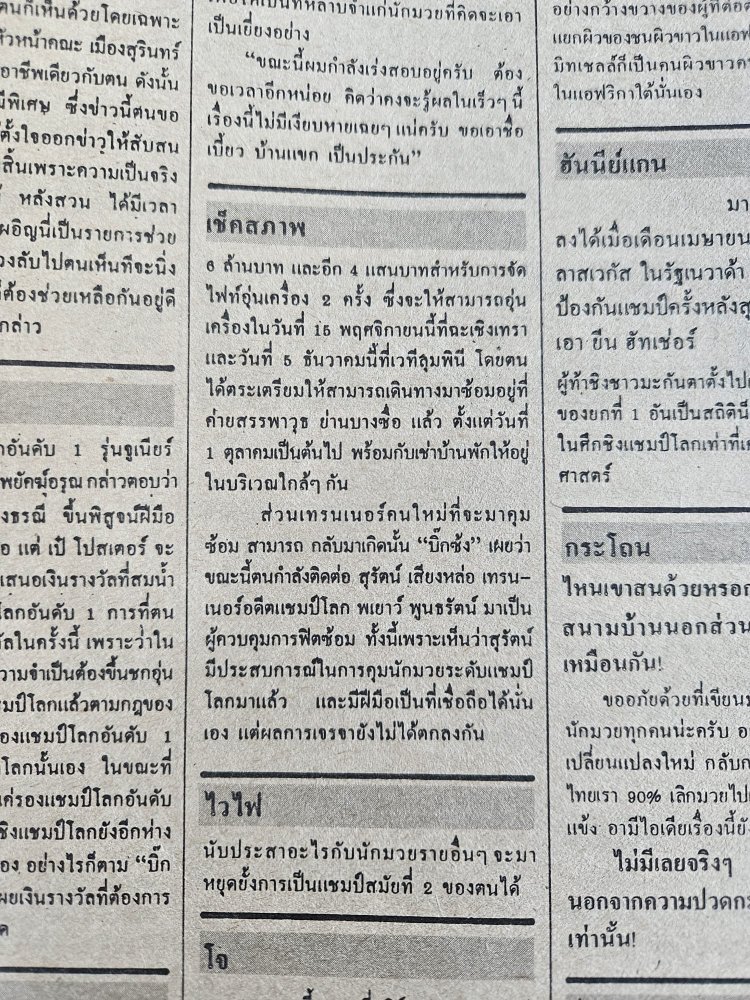
.thumb.jpg.4d388c964cdf4ee7de8307a4fbc89f3e.jpg)
